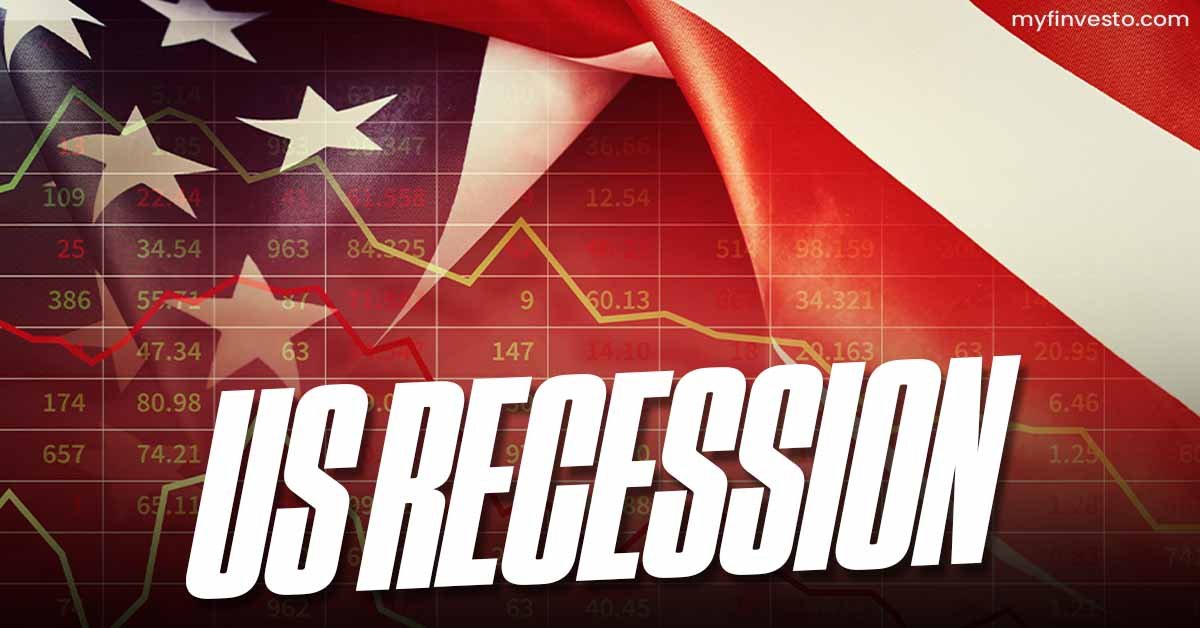Introduction
A recession is a significant decline in economic activity spread across the economy, lasting more than a few months. It is visible in GDP, real income, employment, industrial production, and wholesale retail sales. The U.S., with its vast and complex economy, has experienced multiple recessions, each with unique triggers, impacts, and recovery paths. This blog explores the causes, consequences, and potential recovery strategies of a U.S. recession.
What Causes a Recession?
Economic Factors
- Decline in Consumer Confidence: When consumers are worried about the future, they tend to save rather than spend. This reduction in spending leads to a decrease in business revenues, forcing companies to cut costs, often through layoffs, which in turn exacerbates the decline in consumer spending.
- High Interest Rates: Increased borrowing costs can slow down consumer spending and business investment. When the Federal Reserve raises interest rates to combat inflation, it can unintentionally trigger a recession by making loans more expensive and reducing the flow of money into the economy.
- Stock Market Crash: A significant drop in stock prices can reduce wealth and consumer confidence. A stock market crash can also hurt businesses by reducing their ability to raise capital.
- Decreased Housing Market: A decline in the housing market, such as the burst of a housing bubble, can lead to reduced consumer spending and confidence. The 2008 financial crisis, for example, was triggered by the collapse of the housing market.
External Shocks
- Global Economic Downturn: Economic problems in other countries can impact the U.S. economy, especially when those countries are major trading partners. Global recessions can reduce demand for U.S. exports.
- Pandemics: Health crises, such as the COVID-19 pandemic, can lead to widespread economic disruptions. Lockdowns and restrictions to curb the spread of the virus can halt economic activity, leading to recessions.
- Natural Disasters: Catastrophic events like hurricanes, earthquakes, or widespread wildfires can disrupt economic activity, leading to localized or broader economic downturns.
Policy Missteps
- Poor Fiscal Policies: Excessive government spending or tax increases can lead to budget deficits and higher national debt, reducing economic growth and potentially leading to a recession.
- Monetary Policy Errors: Mismanagement by the Federal Reserve, such as inappropriate interest rate adjustments, can destabilize the economy and contribute to recessions.
Impacts of a Recession
On Individuals
- Unemployment: Job losses are a direct impact of recessions. Companies downsize to cut costs, leading to higher unemployment rates. This loss of income can lead to increased poverty and reduced living standards.
- Loss of Wealth: Declines in stock prices and real estate values reduce the wealth of individuals, particularly those reliant on investments for their retirement savings.
- Psychological Effects: Economic uncertainty can lead to increased stress and mental health issues. The fear of job loss or financial instability affects overall well-being.
On Businesses
- Reduced Revenues: Consumer spending declines lead to lower revenues for businesses, forcing them to cut costs, delay investments, and sometimes close down.
- Bankruptcies: Smaller businesses, in particular, may not have the financial cushion to survive prolonged downturns, leading to a rise in bankruptcies.
On Government
- Increased Deficits: Recessions often lead to increased government spending on social safety nets like unemployment benefits, which can lead to higher deficits.
- Reduced Tax Revenues: With less economic activity, tax revenues decline, straining government budgets and limiting the ability to invest in public services and infrastructure.
Recovery Strategies
Government Interventions
- Monetary Policy: The Federal Reserve can lower interest rates to make borrowing cheaper, encouraging spending and investment. Quantitative easing, which involves buying financial assets to inject money into the economy, is another tool.
- Fiscal Stimulus: Government spending on infrastructure projects, tax cuts, and direct financial assistance to individuals can boost economic activity. Programs like the CARES Act during the COVID-19 pandemic are examples of fiscal stimulus.
Support for Businesses
- Loans and Grants: Providing financial support to businesses, particularly small and medium-sized enterprises, helps them survive the downturn and retain employees.
- Regulatory Relief: Temporarily relaxing certain regulations can reduce the burden on businesses and help them operate more efficiently during tough times.
Workforce Support
- Unemployment Benefits: Extending and increasing unemployment benefits can help those who have lost their jobs, providing them with financial stability while they search for new employment.
- Job Training Programs: Investing in retraining and upskilling programs helps workers transition to new industries or roles, reducing long-term unemployment.
Encouraging Consumer Spending
- Direct Financial Aid: Stimulus checks and enhanced unemployment benefits put money directly into consumers’ hands, boosting spending.
- Tax Incentives: Temporary tax cuts or credits can increase disposable income, encouraging consumer spending.
Conclusion
Recessions are challenging periods marked by economic decline and uncertainty. Understanding their causes helps in crafting effective responses. By employing a mix of monetary and fiscal policies, supporting businesses, and safeguarding workers, the U.S. can navigate through recessions and set the stage for recovery and growth. While the journey through a recession is tough, history shows that with the right strategies, recovery is not only possible but inevitable.
